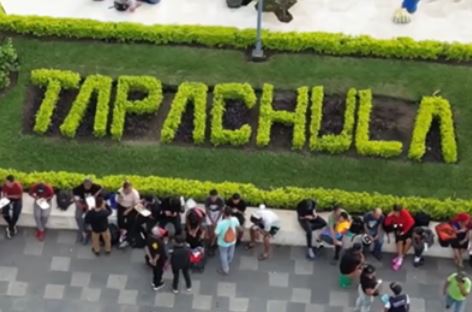
By Todd Bensman as published October 23, 2024 by The New York Post
TAPACHULA, Mexico — This town near the border of Guatemala holds a migrant time bomb ready to go off just after the US presidential election.
The fuse was lit in December 2023, when the Joe Biden-Kamala Harris administration sent senior lieutenants to Mexico to work out the details of what remains a highly mysterious grand diplomatic bargain.

Worried about what the optics of the southern border would do to their re-election chances — though not the migrant crisis itself — the White House wanted to stop the pictures of crowds of people gathered at the wall.
The deal was to have Mexico deploy 32,500 troops to the US border to round up untold thousands of intending border crossers from the northern precincts and force-ship them — “internal deportation” by planes and buses — thousands of miles to Mexico’s southern provinces and entrap them in cities like Tapachula in Chiapas state behind militarized roadblocks.
Mexico closed off most of its freight trains to migrant free riders, bulldozed northern camps, and patrolled relentlessly for more deportee targets.
Meanwhile, the administration increased “parole” programs that flew migrants directly from countries like Venezuela, thus avoiding the border entirely.
The just-released 2025 Homeland Threat Assessment from the Department of Homeland Security says the decrease in illegal border crossing is largely due to “increased Mexican enforcement efforts.”
What happens if that enforcement stops?
Tapachula is bursting at the seams.
No one really knows how many people are stacked up, but local shelter managers reported to me that they had filled up long ago.
The publisher of Noticia De Tapachula, the daily newspaper, told me 150,000 immigrants were in town at any given time, a 42% increase in the city’s normal population of 350,000. Untold thousands more are stacked up in Villahermosa, a city of 830,000.
Mexico’s response has been to try to spread the immigrants around the southern portion of the country.
I spent time at two different roadside areas where federal immigration officers would call out names from the crowd, who would board buses that delivered them to other regional cities in Chiapas — but NOT beyond them and certainly never beyond Mexico City.
Mexico is still trying to hold up its end of the bargain, at least until November 5, even though more migrants are starting to slip through and making it over the Texas or California borders.
The question is what happens after the American election.
ve of caravans for the 10 weeks before Inauguration Day. All the migrants I’ve spoken to say they fear a Trump presidency, and will rush to the border in a last-ditch attempt.
If it’s Harris, perhaps the massive tidal wave will go on for the next four years, much like the last four.